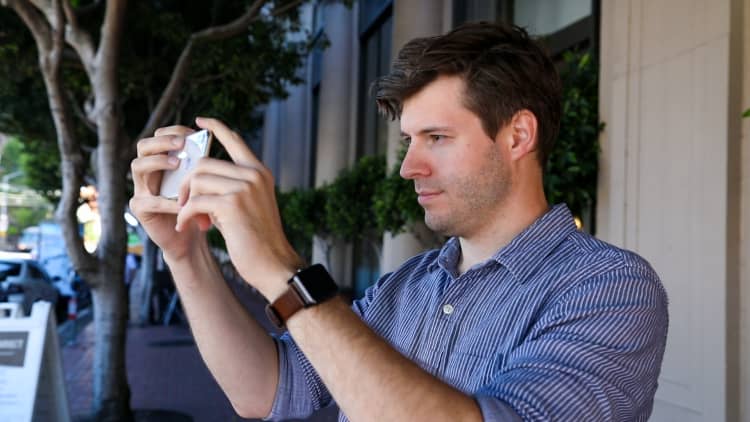
We generally take our smartphones with us everywhere we go and are increasingly turning to them as our primary camera.
If you’re going to be using your smartphone to capture video, it’s worth your time to learn how to get the most out of it. With a few composition conventions, features like time-lapse and slow motion, and editing apps like iMovie and Google Photos, you can create impressive content entirely on your phone.
Resolution
Generally, you should opt for the highest quality available on your device. For most recent phones that will be 4K, which you can find in your settings.
Lighting
The sensors on smartphone cameras function best when you have plenty of light. The best time to shoot outside is during Magic Hour, the few hours after sunrise and before sunset. If you are photographing people, try to keep them in the shade so they aren’t blasted with harsh sunlight.
If shooting inside, put your subject near a light source. Natural light from a window works great. Also, make sure your subject is not too backlit.
Third-party camera apps
Filmic Pro is a highly regarded third-party app, and my favorite to use when I want to have the most control over video. It gives you manual access to all your cameras features, as well as functions available on more professional cameras.
Composition
Activate the grid on your camera app and use it to help frame your subjects when filming. This helps you adhere to the composition convention of the rule of thirds. Try to be conscientious of this when framing your shots and align points of interest to the intersecting points of the grid.
When shooting video, try to keep as still as possible. Even though most phones have some form of stabilization, it’s best to minimize movement. If you can, use a tripod to keep everything stationary and composed. Amazon has quite a few cheap options to choose from that will work great.
Audio
Most microphones on phones are omnidirectional, meaning they pick up noise from all directions. This may be great when you’re casually capturing a scene with natural sound but can be a problem if you’re trying to record clean audio of someone talking.
Take your subject somewhere quiet and try to stand nearby. I also recommend getting a microphone for your phone, which you can buy online. Clean audio differentiates pro from amateur video, so don’t overlook it.
Orientation
Another thing to think about when you’re shooting video is how you plan to use it. This will dictate which orientation you want to capture it in. Most of the time you will want to shoot with your phone on its side.
As a pro shooter, I always shoot this way because most of the time that’s how the content will be watched. But if you want to shoot an Instagram story or post to Snapchat, you will want to shoot vertically to avoid having the apps crop your video.
Slow Motion
Slow-motion video can be a lot of fun. This feature works best when you have plenty of light and you’re shooting a fast-moving object. Depending on the model you have, you can choose different frame rates. The higher the frame rate, the slower the video.
Time-lapse
Time-lapse is another time distortion perspective that can be really cool. When capturing a time-lapse, you want to keep the camera as still as possible, ideally attaching it to a tripod. Depending on how long you plan to film, you may want to plug your phone in so it doesn’t die. Shoot scenes that will have some sort of change over time, such as a scenic vista with lots of stuff happening, or a busy area with people milling about.
Hyperlapse
Hyperlapse is a variation of time-lapse that involves motion. The easiest way to capture this is using the app Hyperlapse on Apple devices and Microsoft Hyperlapse Mobile on Android. These are great for when you’re on the move.
Editing
Use iMovie on iOS to take all the videos from your trip and edit them together with music and effects. Google Photos also has some options to do this and makes it really easy to share with family and friends.
Upload to YouTube or Vimeo
Once your movie is complete you can upload it to YouTube or Vimeo for free and clear space on your phone.
— Andrew Evers is a CNBC video producer.

Recent Comments